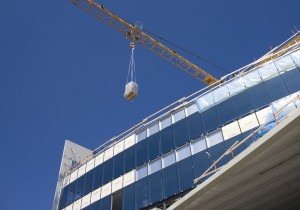12 Janaury 2016
By Bryan T. Smyth
bryan@TheCork.ie
Has the recession ended? The price of the average three-bed semi detached house in Co Cork rose 1.25% to €121,500 in the last six months, a nationwide property survey has found.
The REA Average House Price Survey concentrates on the sale price of Ireland’s typical stock home, the three-bed semi, giving an up-to-date picture of the property market in towns and cities countrywide to the end of the selling season in December.
REA agents in Co Cork are predicting a further 7% rise in prices in 2016, after 13% was added to the value of the average three-bed semi in 2015.
“Overall prices remained static in the fourth quarter on 2015 and we are still experiencing good level of activity,” said John O’Neill from REA Celtic Properties in Bantry.
“Even at the end of the year overseas buyers were still active in the market.”
The average semi detached house nationally now costs €188,370, the Q4 REA Average House Price Survey has found – a slight rise on the Q3 figure of €186,102.
Prices in Dublin city and county fell by -0.75% in Q4, while Dublin city alone fell by -0.69% – the average three-bed semi now costing €357,500.
However, the biggest growth was in the rest of the country outside the commuter belt and larger cities, where house prices increased by 0.95% in the last three months.
The lack of suitable supply is the biggest influence on the property market nationwide, according to REA Chairman Michael O’Connor.
“What we have seen in the last three months are prices only increasing in areas that are offering people the accommodation that they require,” he said.
“People may want to buy housing, but if suitable properties are not available, they will not buy.
“We are seeing a lack of supply of good quality three-bed semi-detached houses across the country, and a desperate need for new developments.
“In many areas, the properties available in the sub-€220,000 level are either apartments, houses that are too small or need too much investment to bring them up to standard.
“The market is still stalled at the second–time buyer level, due to the restrictive nature of the Central Bank’s deposit lending rules.
“Many potential second-time buyers now only have the option of renting bigger houses and letting out their own, as they are not able to afford the 20% deposit to be able to purchase.
“There are very few suitable houses to buy at the lower end of the market for first-time buyers because potential second-time buyers have no way to trade upwards.
“While Dublin was the first region to recover, followed by the commuter areas, we are now seeing an increase in values in our largest cities outside Dublin a year later, and one-by-one our smaller towns have started to see increases.
“For the first time we are seeing developers trying to buy land in the anticipation of building as it is now economical to build in some of our larger cities.”



